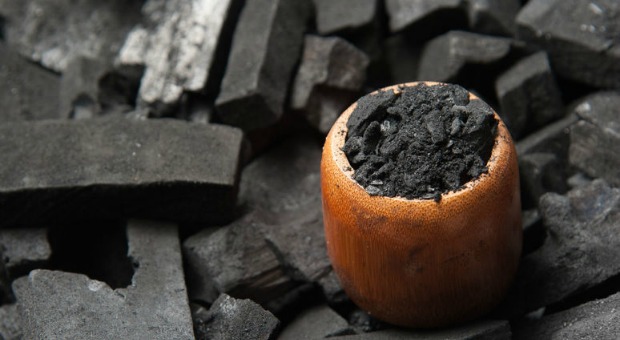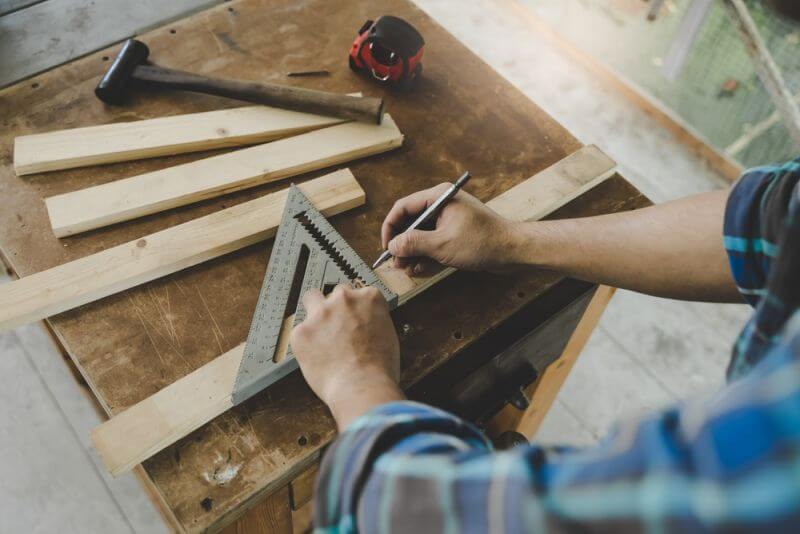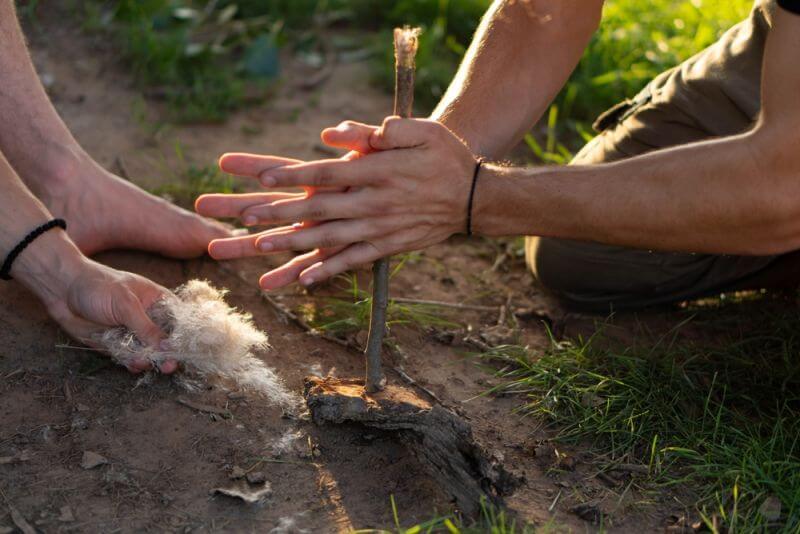When the air smells bad, and the water tastes awkward, you know something is wrong with them, and most probably they are polluted.
While many people have traded the safety and cleansing power of activated charcoal for all kinds of poisonous air sprays and dangerous municipal water supplies, activated carbon can save your life now as well as in the future.
You can make activated carbon at home if you have proper tools and materials. This substance has a lot of uses, and air and water filtration are on top of them as it offers the widest range of protection against a range of chemicals.
Read the following article and learn how to deal with it!
How to Make Activated Carbon
Even though activated carbon is not especially difficult to make, you will still need the right tools and materials. Here are the basic steps:
Step 1 – You will need wood or some other dense plant fiber to burn. Hardwood, coconuts, or just about anything else that is porous and will burn well can be used for this purpose. Make sure the material is as dry as possible before burning it.
Step 2 – Put the material in a pot and cover it. The pot should have some ventilation holes in it, however, the flow of oxygen should remain limited. If you know how to make tinder cloth, then you can use a similar process for making charcoal.
Step 3 – If you have a campfire going, set the pot on the fire. The temperature will have to be hot enough to cause the material within the pot to burn. Your goal is to burn off everything but the carbon. It may take several hours for this process to complete. During that time, you should see smoke and gas escaping from the pot.
Step 4 – Let the charcoal cool, and then rinse it to remove any ash or other debris.
Step 5 – Grind the charcoal into a powder. As you get better at making activated carbon, you can try leaving it in small chunks. Remember that later on, the charcoal will need to be saturated with a chemical that will increase pore size.
If the chunks are too large, you may not achieve this goal, and the resulting activated carbon will not be as efficient or as effective. Make sure the charcoal from Step 5 (this step) is completely dry before mixing it with anything else.
Step 6 – Next, you will either need bleach, calcium chloride, or lemon juice to turn the charcoal into activated carbon. Of the three materials, calcium chloride can be made from natural resources as long as you observe some basic safety precautions.
To make calcium chloride, work outdoors or in some other well-ventilated area, and wear goggles, safety gloves that are resistant to acids and other chemicals, and other protective gear. Start off with hydrochloric acid (you can obtain this from the stomach of any animal you have hunted and refined it from there) and limestone (your main source of calcium carbonate).
Put the hydrochloric into a glass beaker, but don’t fill more than ¼ of the vessel (some people go as high as half. It is best to start with small amounts until you are more sure of how the chemicals will react to each other).
Carefully pour calcium carbonate powder into the hydrochloric acid until the solution stops bubbling. Once the reaction is complete, pour the solution through a strainer so that any lumps are removed. Next, you can heat the solution to remove any excess water. The powder left behind is calcium chloride.
Step 7 – Next, mix the material you choose from step 5, and combine it with 75% water.
Step 8 – Pour enough of the mix from Step 7 into the charcoal so that the charcoal is completely covered.
Step 9 – Let the charcoal sit for 24 hours.
Step 10 – Drain all liquid from the carbon and rinse it to remove any stray chemical left behind.
Step 11 – Remove as much water as possible. The charcoal should be wet without being completely saturated.
Step 12 – Place the charcoal back in the metal pot and let it cook for about 3 hours. If the fire is hot enough to boil water, it will be just the right temperature to finish converting charcoal into activated carbon.
How to Use Carbon for Filtration
Air Filtration
Do you ever notice that when you travel to certain areas, the air smells really bad? Do you also notice that this sensation seems to fade after a few days? The air around you is so dirty it is probably making you and your family members very sick even though your nose had adapted to it.
From higher volumes of cars passing to garbage dumps and industrial smokestacks, there are actually very few places left where there is safe, clean air to breathe. Here are just a few contaminants that trigger everything from asthma to increased risk of panic attacks, heart problems, and other diseases:
- Aside from carbon monoxide, automobiles also release other dangerous chemicals into the air, and some of them are known to trigger asthma and other breathing disorders.
- Medical waste and rubbish dumps release dangerous chemicals into the air. If you smell something bad in the air when downwind of a dump, then this is the natural gas released by the piles of garbage. The dump may also be releasing all kinds of chemicals created when trash mixes together and new substances begin to form. You can’t tell just how many of these substances cause cancer or other health problems simply because you inhaled the disgusting odor of rotting trash.
- Factories and power plants also release volatile organic compounds and other chemicals into the air. You may be able to smell some of them, while others are odorless.
If you spend the money and time to build an air quality sensor capable of detecting specific chemicals, you’ll be amazed at how dangerous the air around you really is. It will get much worse after a crisis because of increased numbers of fires and a lack of tools, labor, and resources required to manage dangerous chemicals.
Activated carbon can be used to remove most volatile organic compounds and many other chemical-based contaminants from the air. In fact, if you suffer from chronic medical problems, you might need a pre-fabricated carbon filter attached to a fan or some other source of airflow. Aside from cleaner smelling air, it will ease your health problems.
If you are concerned about gas attacks or other social collapse related scenarios – these kinds of filters will be essential if you plan to stay in your home. While there is much more to prepping for an air quality-related disaster, activated carbon filters are a good place to start.
There are a number of furnace filters available that have activated carbon in them. In most cases, these are little more than a liquid solution of activated carbon added to the filter media. You can try experimenting with your own versions to see if you can get a filter that effectively removes odors (and therefore their cause) from the air.
Make Respirators and Gas Masks Using Activated Carbon
Even if you could seal off your home entirely from the outside world, it would not be a feasible option. Gases and bioweapons will easily seep through even the tiniest crack and can be devastating, and there will also be times when you have to leave your location. And if you are away from your bug out location, you’ll need to protect your lungs as much as possible.
These are the reasons why making and wearing a viable gas mask or respirator is very important. As with air filters, activated carbon offers the widest range of protection against a range of chemicals. Considering the rising rate of smog and other air pollutants, activated carbon masks are also very important for improving and maintaining a reasonable level of health. In fact, in many Asian countries, people don’t go outdoors or exercise without wearing an activated carbon mask.
While this is a fairly rare sight in the United States, those who know the truth are doing the exact same thing. If you have asthma or other chronic breathing problems, even a surgical style mask with activated carbon in it can make a big difference.
I have personally noticed a 50% reduction in noxious odors from insecticides, smog, and other fumes when wearing this kind of mask. Others that have tried them notice a 70% or better reduction. While I have not tried the wrap-around designs more common in Asian countries, I suspect they would be more effective because they would seal off the areas where I tend to get the most air leaks.
A surgical style activated carbon mask is better than nothing, however you will need a more robust respirator design for gas attacks and other dangerous situations. You can try making them from soda bottles or purchase one made for this purpose, as you see in the video below.
Just remember to practice breathing with these masks, and they can and do restrict airflow. Also make sure you keep the mask clean and change the cartridges on a regular basis. As good as activated carbon is at filtering out many kinds of chemicals, the pores in it still fill up quickly, hence the need to replace the cartridges often.
You can and should try taking used cartridges apart to see if you can find a way to refill the activated carbon part. Even if you cannot obtain or make the other filter media, at least you may be able to keep this vital part of the mask working for a longer period of time.
Using Activated Carbon for Water Filtration
As a prepper, you may already be giving a lot more thought to water quality than air quality, but activated carbon isn’t only useful for removing the bad taste from the water after it has been boiled. That bad taste is an indicator that the water isn’t as clean as you think it is.
Boiling water will kill off bacteria, however, it will actually cause an increase in the concentration of heavy metals, pesticides, and even dangerous drugs that have leached into just about every potable water supply at the surface level. While activated carbon will not remove all heavy metals, it is excellent for removing most other dangerous chemicals and drugs.
Typically, filtering water with activated carbon is a lot easier than filtering air. At the simplest, just add some activated carbon to a clean sock and pour the water through it. You can also make your own cartridges and add a pump for larger volumes of water.
When designing your own system, don’t forget to make it easy to change the cartridge as well as to detect when it needs to be changed. Since many water quality issues reflect changes in pH, you may want to try building a pH sensor into your system so that you know when to change the filter.
As you can see, making activated carbon isn’t especially difficult. No matter whether you are concerned about improving your health and lifestyle now, or want to do as well as possible during and after a social collapse, activated carbon should be a household staple.
Even if you get started by simply buying products with activated carbon, it will give you a chance to see how useful it is before you delve into making your own activated carbon exclusively from natural resources. Once you acquire this skill, you will be well on your way to managing a number of emergencies that may not be as high on your priority list as others.
Nevertheless, when the situation demands, at least you will have something on hand to deal with it.
Never worry about having safe water again.
Click the banner below or HERE for more!










Ben Leucking | April 23, 2017
|
If the SHTF, what is the probability that you will be able to purchase or even find a large quantity of coconut shells, hydrochloric acid and calcium carbonate to produce activated charcoal? Save yourself the time, trouble and risk, and purchase the quantity you need via a host of online web sites. The product will have been produced under much more controlled conditions than you will achieve on your patio. The cost of activated carbon, made with coconut shell, is about $5.00 per pound in quantities up to 25 pounds. Beyond that level the price drops significantly.
Carmela Tyrrell | April 25, 2017
|
Ben,
Hydrochloric acid is found in the stomach of many animals that people will be hunting after a major social collapse. If you are in a setting where you can hunt, there is also likely to be large deposits of limestone – so making the calcium carbonate is more than possible. In addition, if you are in this type of setting, you will also more than likely have plenty of trees to make charcoal from. Coconut hulls are not absolutely necessary; however they are a staple these days because they are a very cheap byproduct from the food and personal care industries.
Nancy Murphy | June 18, 2021
|
I didn’t find how to use lemon juice to activate charcoal. What amount if lemon juice would you use and how much carbon material…what are the step by step instructions for making activated charcoal using lemon juice?
Julie | November 27, 2022
|
my undertanding has always been equal parts when replacing Calcium Chloride with Lemon juice
Jim glinski | April 23, 2017
|
Can be used for a alcohol refrigerator .Google it !! And salt will do it !
R Werner | May 2, 2017
|
Excellent!
roberto | November 20, 2017
|
I hunt, but in my area there is very little limestone and a whole lot more schist, gneiss and granite rock, as well as metamorphosed sandstone….maybe some karst, here and there. Let’s separate hunting from available lime deposits, shall we…. LOL
good article, though ! Keep up the good work……
doaa | August 25, 2018
|
Should i wash charcoal When I active it by lemon instead of calcium chloride?
Alex | August 27, 2018
|
Hello.
Thank you for commenting. If you can’t find calcium chloride, you can substitute it for bleach or lemon juice. Just use either 1.3 cups (310 ml) of bleach or 1.3 cups (310 ml) of lemon juice instead of the calcium chloride solution.
Alex, from Survivopedia 🙂
doaa | August 27, 2018
|
What i mean is do i have to wash charcoal When I active it by lemon juice before i place it back in the metal pot is it necessary to wash it
Trudy | June 8, 2024
|
How much charcoal for that amount of juice?? Just enough so that it is a paste after adding the 310 ml of juice?
Kyle | November 27, 2022
|
follow same directions as listed above. Just picture your lemon juice with a different label that says “calcium chloride” . Substantially less important to ensure lemon juice is thoroughly washed out, as opposed to the 2 listed chemicals and the Bleach alternative.
Marcello | October 15, 2018
|
Hi there, thx for your useful information about making activated charcoal by chemical solution.
Btw, do you have any experiences or knowledge about activated carbon making by using physical system? if you do, could you please share? Thx a lot.
Indonesia Charcoal | October 19, 2018
|
Helpful guide, Thanks for this
Ted Bax | May 4, 2019
|
Hi, In step 12, why do you cook for 3 hours when the water changes to steam & evaporates after 20-30 minutes? When its dry nothing more can be done.
red | September 28, 2019
|
When we needed charcoal for the house, Dad filled an old pressure canner without a seal with hardwood chips. Anything with a lid that screwed in place should work, but do not tighten it or it can explode. Light a fire in the forge, and cover the canner with wood. When the coals died, it was charcoal. Heat carbonizes the wood. Too much fire and it will turn to ashes.
He had a firepit along one field that we filled with wood once or twice every winter before everything froze, capped with damp soil, packing it over the top, and was lit through a small hole. When the fire took off, the hole was stopped with wet clay. The mound has to to be watched 24/7 for several days, and it’s dangerous. Gasses can explode, or part of the mound cave it. We learned by watching, then, as teens, by helping. No one not experienced should work a charcoal mound. Start smart, start small and work your way into it. Any hardwood is best for the forge and best for the house. niio
Rick Parshall | May 29, 2020
|
I have researched bio-char which is one step shy of activated carbon.. I use a 55gal drum with a smaller drum inside. Fill the inside drum with wood or many other things such as bones etc will char.. the inside drum is sealed closed and several small holes drilled/punched into bottom,keeping away from the actual fire. Then with small drum closed and inside bigger drum(holes must face down) fill 55gal drum nearly to top with wood pieces(I find small pieces like 3/4″ hardwood pieces char best in inner drum) punch/drill holes around base of outer drum for intake, cut a hole in lid of outer drum lid to accept stovepipe (6or8″ about 6ft long)attach pointing straight up… this is known as a updraft downburn retort… light wood on the top of drum,put on lid and let it burn! As the fire burns down the pieces in closed inside drum begin to offgas it will poof sending flame out pipe like an afterburner on a jet!(same principle ) when fire is out the inner barrel is now char or 100%pure carbon. If you pull inner drum out immediately and dump into wheelbarrow and quench it with water(careful it steams bigtime) what you have left is activated carbon…. I grind it down and soak it in a compost tea overnight and viola we have bio-char all inoculated and ready to use in garden… living web farms has a great set of videos on it… it works amazingly in the garden too!! I plan to make some as activated carbon (without inoculating with compost) as filter material for water etc… cool stuff
Muwanguzi Isaac | July 2, 2020
|
Thanks but you didn’t tell us how we can use lemon juice when preparing activated charcoal
Cleatis | November 27, 2022
|
1 part Lemon juice WITH 3 parts water. 1 cup lemon juice= 3 cups water. 1/4 cup lemon juice? 3/4 cup water
flora | September 2, 2020
|
please i have a question. let’s say i am not using the stove for example to cook the charcoal but i am using a furnace. what temperature should i cook the charcoal for and for how long
Cleetus | November 27, 2022
|
what you’re cooking does not change, so neither will the recipe. whether stove top, oven, over open flame, the main point is that the contents reach a certain heat for a certain perioid of time
D Pasayat | October 25, 2020
|
It is very useful